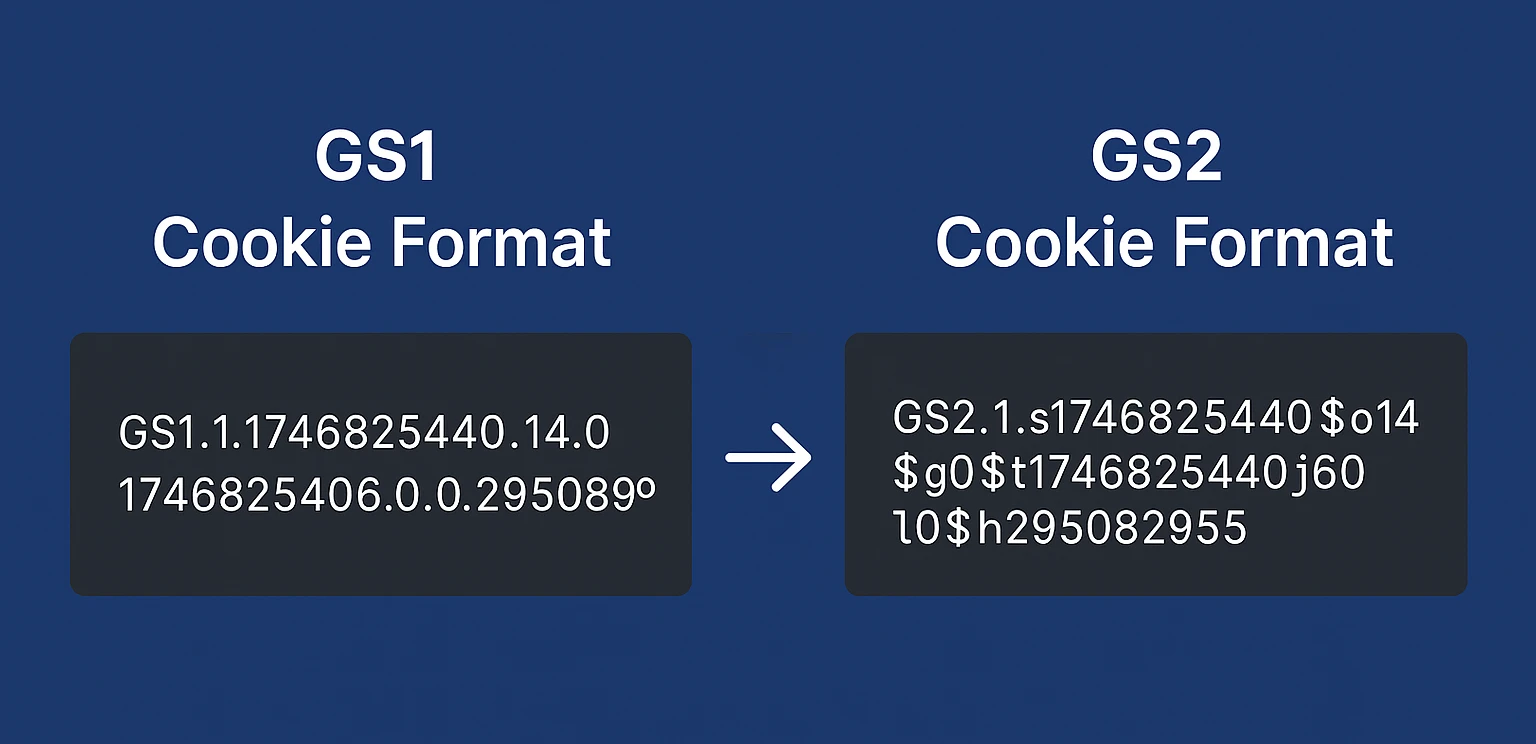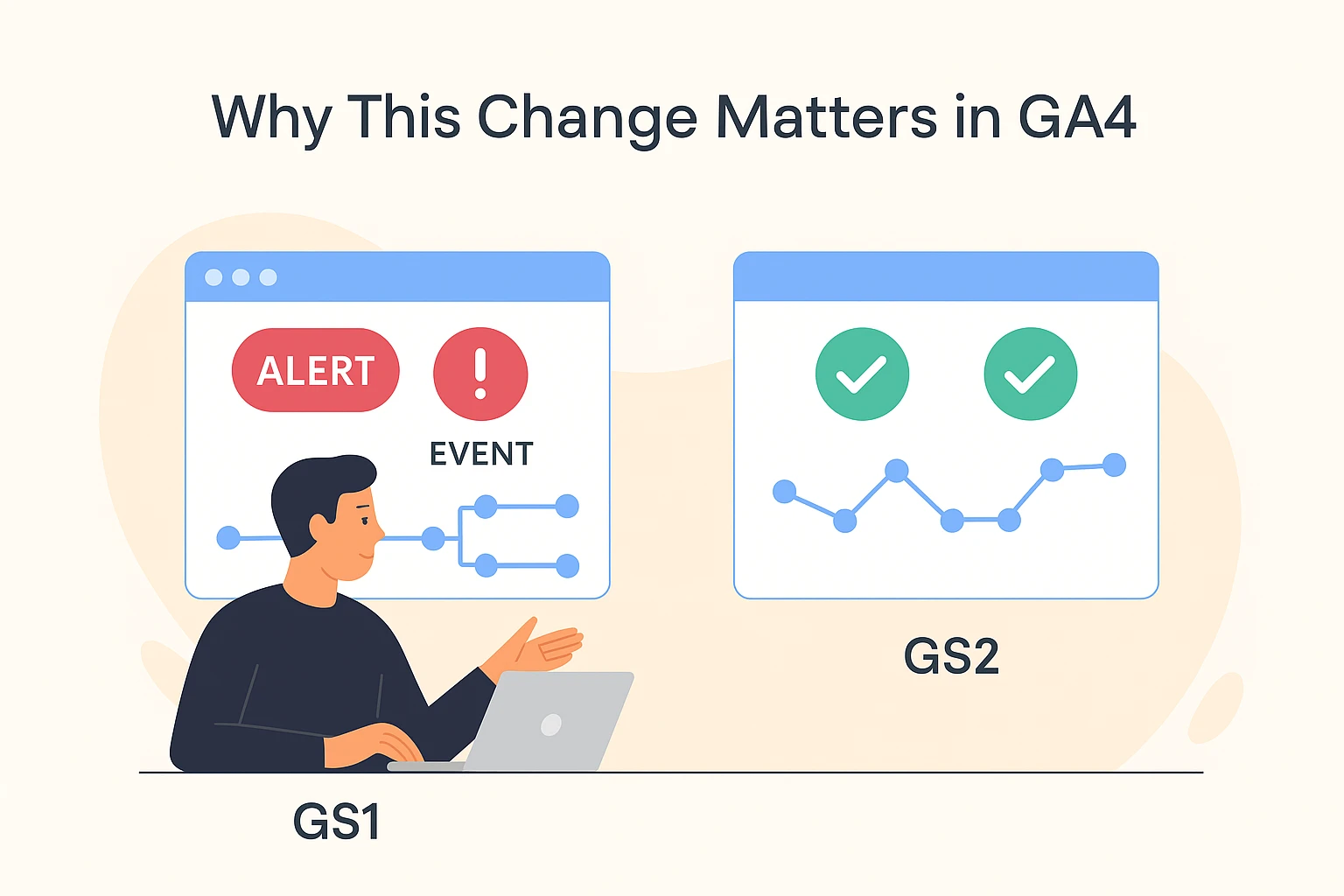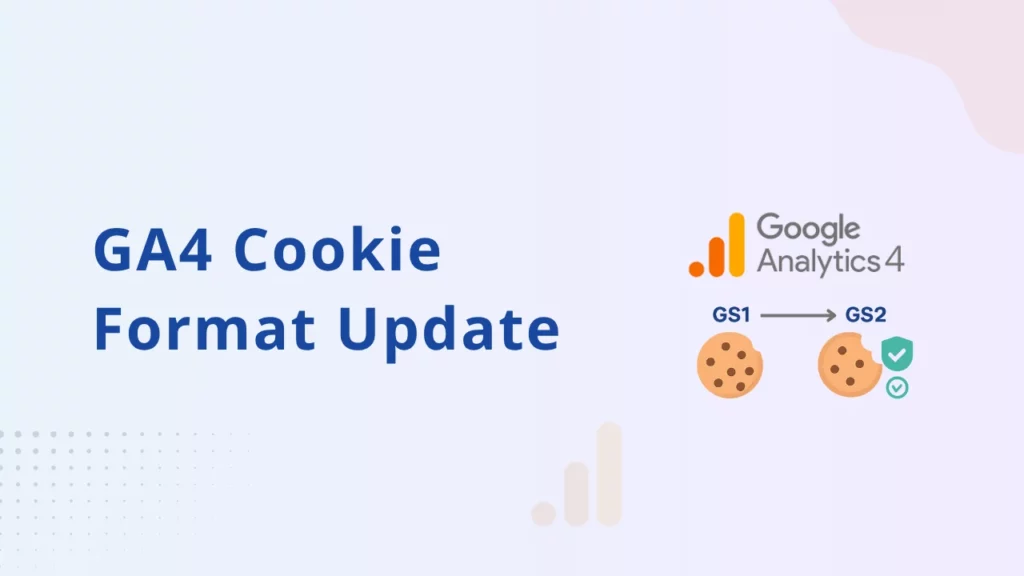Google Analytics 4 (GA4) has introduced a silent yet important change to its session cookie structure. In May 2025, without a formal blog announcement, Google transitioned from the older GS1 format to a more flexible and scalable GS2 format.
This update directly impacts how websites and eCommerce stores track user sessions and attribute conversions, making it essential for marketers, developers, and analytics teams to adapt.
What Was the GS1 Cookie Format?
The GS1 format used a rigid, dot-separated string of session data, with values placed in fixed positions. While it worked, it lacked flexibility and was difficult to scale or interpret.
Example:
GS1.1.1746825440.14.0.17468254406.0.0.295082955
Issues with GS1:
- Low readability
- Difficult to parse programmatically
- Fragile when changes were introduced
What Has Changed in GS2?
The GS2 format replaces fixed-position values with labeled key-value pairs, separated by dollar signs ($). Each key includes a prefix that identifies its function – for example, s represents the session ID, and t stands for the timestamp.
Example:
GS2.1.s1746825440$o14$g0$t1746825440$j60$l0$h295082955
Key Benefits of GS2:
- Simplifies parsing and debugging
- Supports optional fields, reducing cookie size
- Built to accommodate future data requirements
- Robust structure, resistant to format changes
GS1 vs GS2: A Technical Comparison

Feature |
GS1 Format |
GS2 Format |
|---|---|---|
| Structure | Dot-separated | Key-value pairs |
| Readability | Low | High |
| Flexibility | Limited | High |
| Maintenance | Fragile | Scalable |
Why This Update Matters

Incorrect handling of GS2 cookies can result in:
- Broken session tracking
- Inaccurate Google Ads reporting
- Misattributed conversions in GA4
If your setup includes hardcoded cookie parsing or legacy tracking scripts, they may no longer work correctly with the new GS2 format.
This is especially critical for eCommerce stores that rely on session data for retargeting, attribution, and ROAS optimization.
What You Should Do
- Audit your implementation: Check for custom code parsing GA cookies.
- Update logic: Ensure it supports key-value parsing (GS2).
- Use automation: Tools like Conversios handle this change automatically.
This also ensures compliance with Google Consent Mode v2 as privacy updates evolve.
Note:
This update does not affect standard Google Analytics cookies like _ga, _gid, or _gat. Only session-specific cookies related to GA4 measurement IDs have changed.
How Conversios Helps You Stay Compliant
If you’re using the Conversios GA4 plugin for Shopify or our WooCommerce GA4 tracking plugin::
- You’re already protected from format changes.
- Your session tracking remains consistent and accurate.
- No manual updates or code adjustments are required.
The plugin auto-adapts to new GA4 structures, helping you maintain clean data and full-funnel attribution without downtime.
Conclusion
The GS2 format is more than just a technical upgrade – it’s a fundamental improvement in how GA4 manages session tracking. With better structure and extensibility, it ensures your analytics setup is more accurate and future-proof.
For those using manual setups, it’s time to update. For Conversios users, the transition is seamless.
Frequently Asked Questions
Q. What is GS2 in GA4?
GS2 is the new cookie structure that uses labeled key-value pairs for better tracking accuracy and future flexibility.
Q. Do I need to take any action?
Only if your setup includes custom cookie parsing, most plugin-based setups (like Conversios) are already compatible.
Q. Will this affect my reports?
Not directly, but failure to support GS2 may lead to session mismatches or data gaps.

